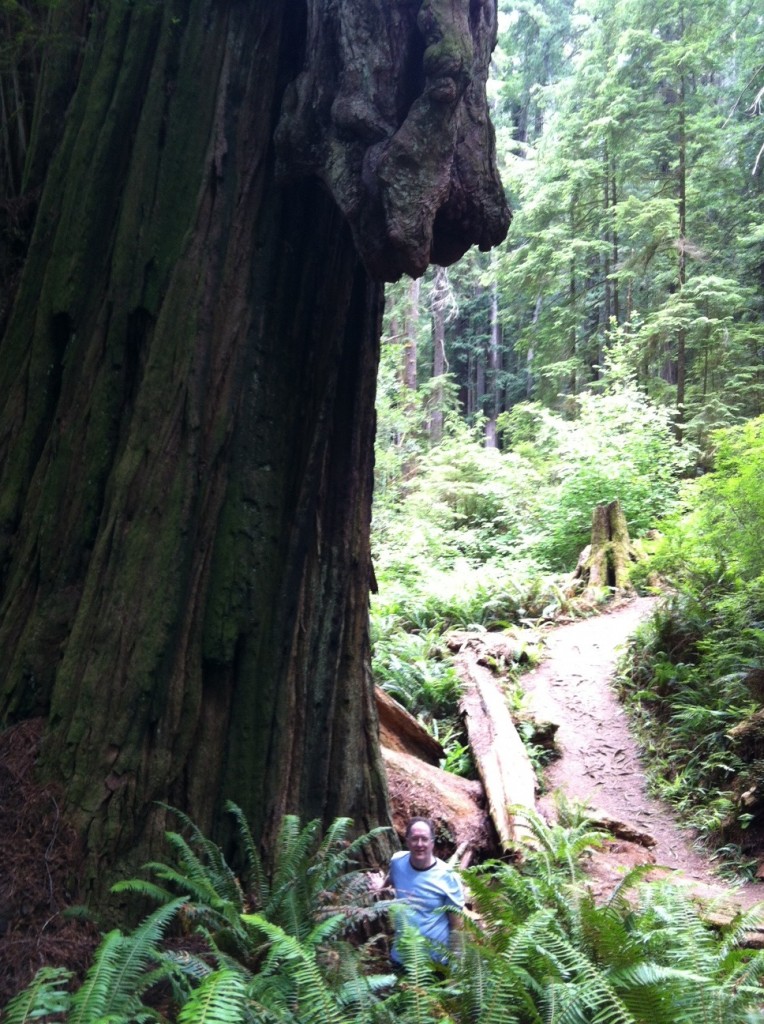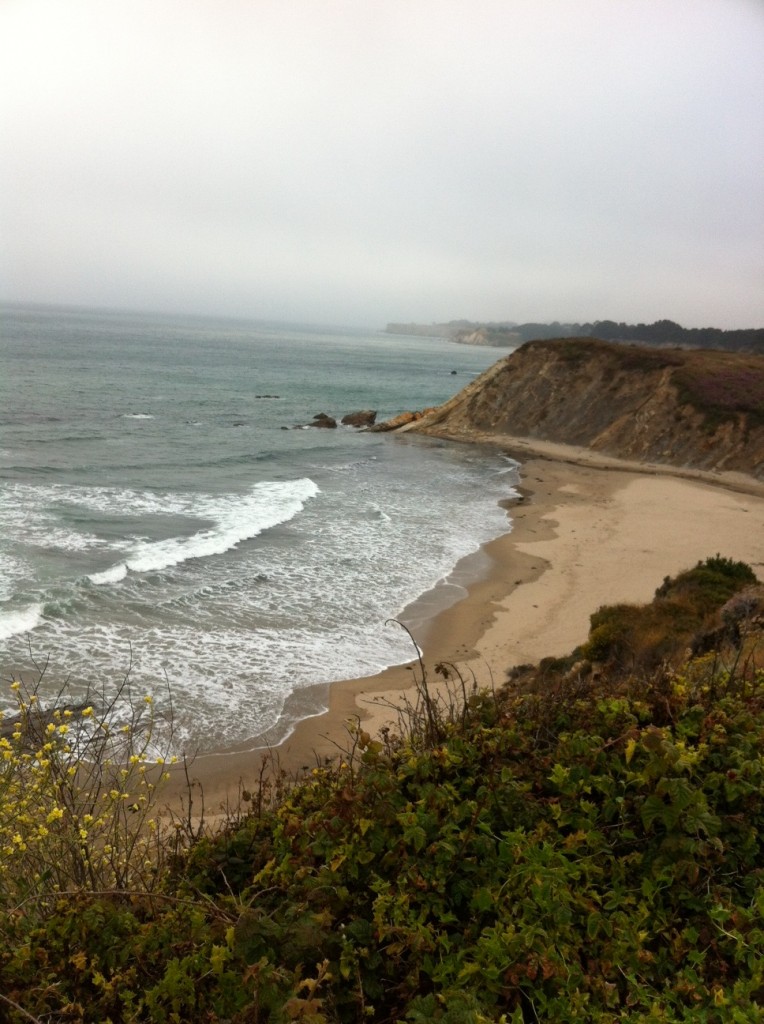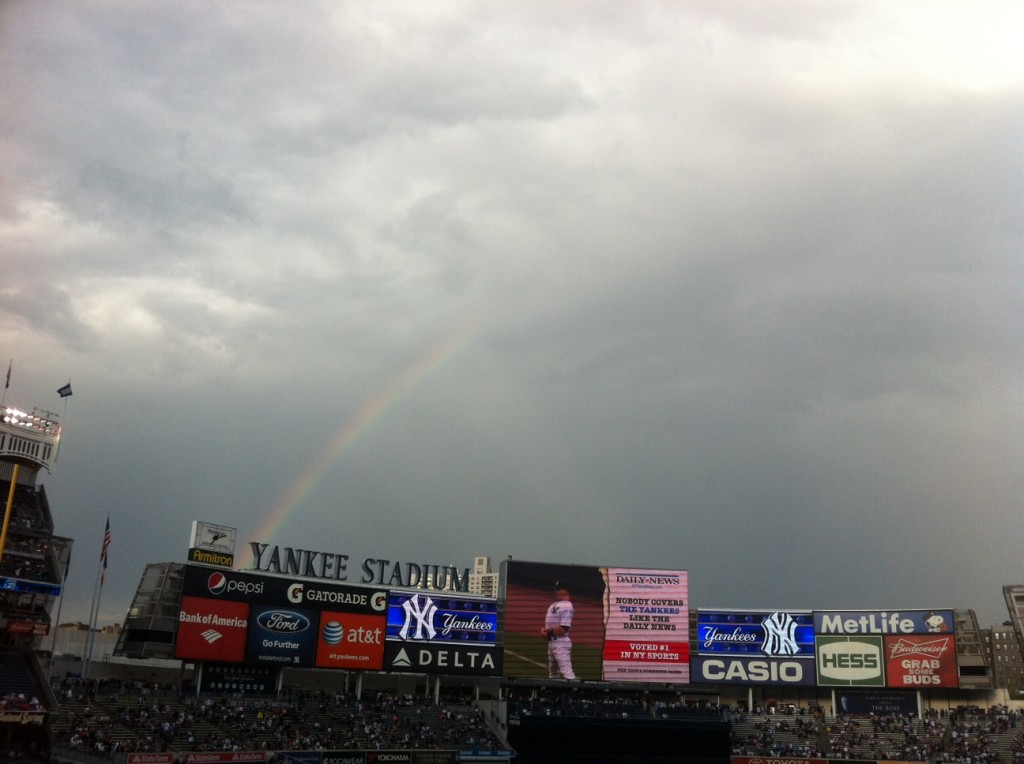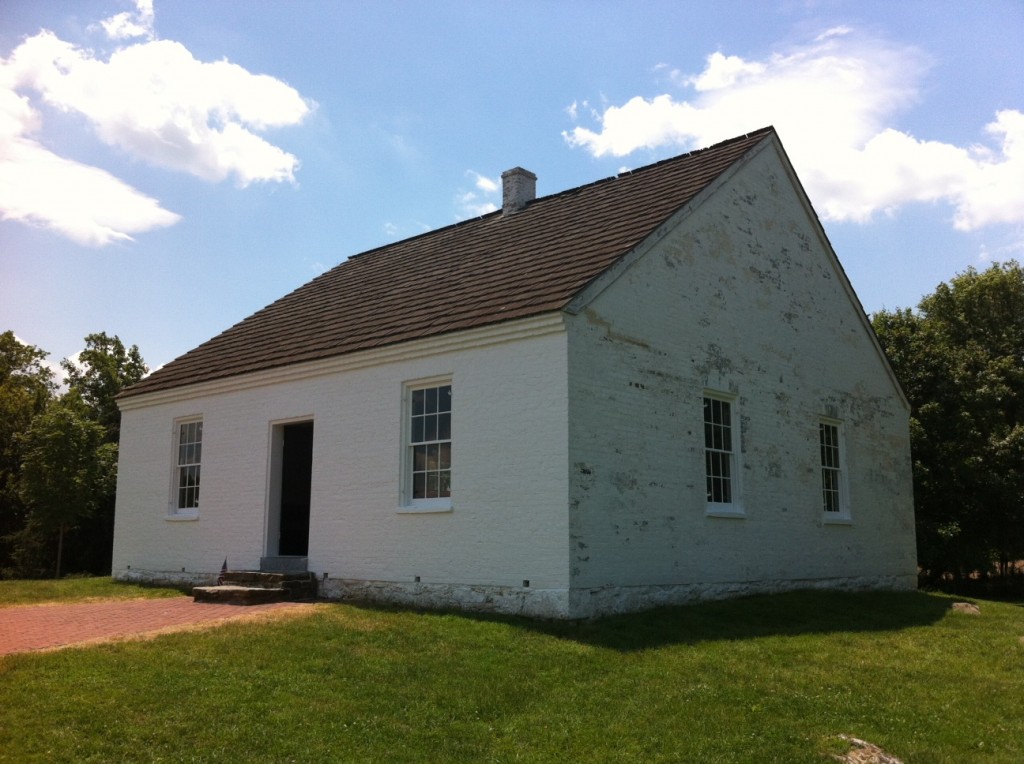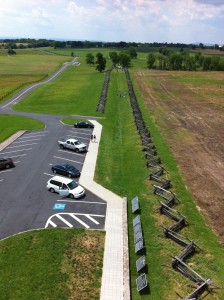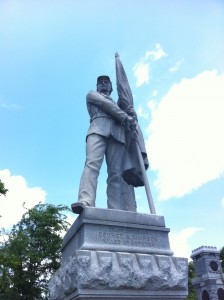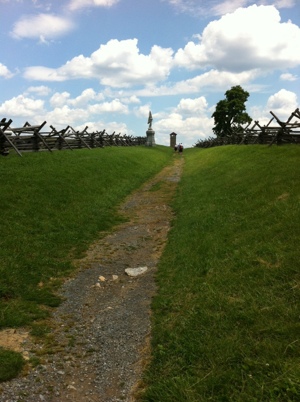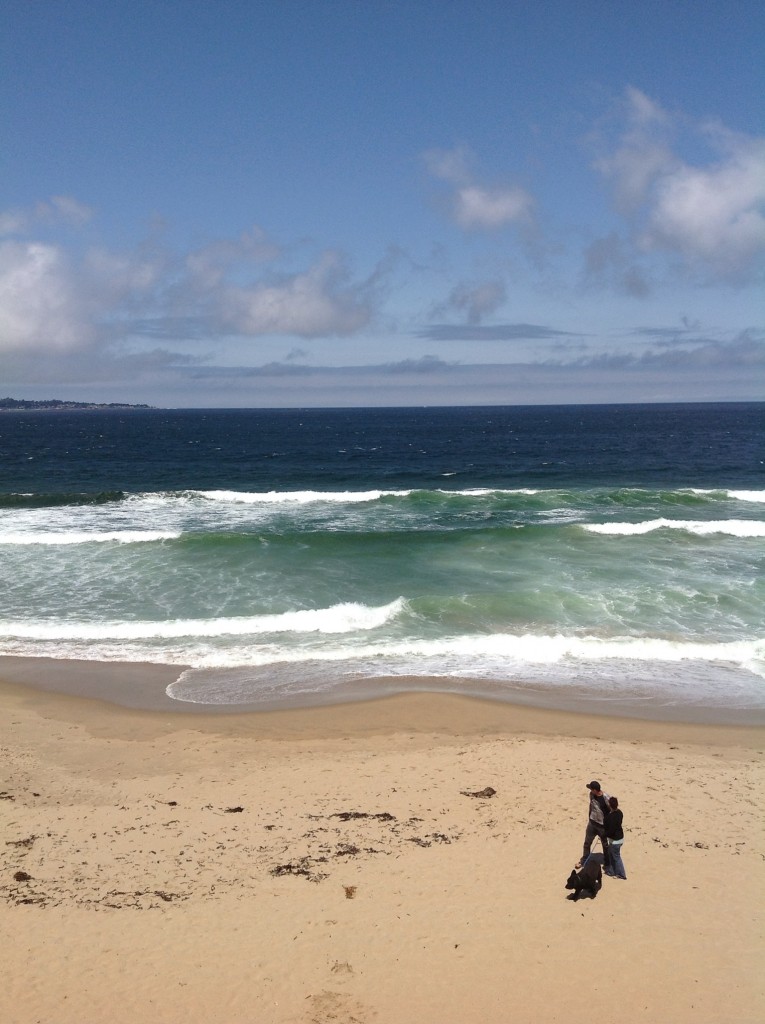 I’m hugely distracted this morning.
I’m hugely distracted this morning.
Our hotel in Monterey is an older one. There’s nothing fancy about it. The room is clean and small, but comfortable in a way that covers all your needs as long as you keep them simple. I am thrilled to be staying here. Because it’s old, it was built before California outlawed building right on the beach. It’s a windy morning, and the waves are high. It looks like they’re rolling in directly under my room, along with the talented surfer or two.
I fell asleep last night listening to the rumble of the ocean, so loud and rhythmic it seemed to be an extra heartbeat in the room. When I woke up this morning, it was still there, making me smile before I even opened my eyes.
This morning, my companion is off for a visit at the Monterey Herald newsroom. Royal Calkins, the editor, kindly gave him a ride so that I could have the rental car to drive downtown to visit the aquarium or scoot down the coast to Carmel. But I just can’t tear myself away from my little room. I’ve been given a late checkout. I’ve promised myself I’ll work at the table in front of the window, enjoying the sight of the Pacific waves and the squeals of children running down the beach. I’ve left the door ajar, just enough to let the salt breeze in, while keeping the seagulls out. That should be enough, right? I should be able to crank out the many words in this luscious, deep blue setting.
But the lure is just too much. A dozen times now I’ve left my chair to go stand on the deck to just watch and listen. I’ve tried so many times to shoot pictures and videos, but each time I’m disappointed with the result. My little iPhone is inadaquate and my timing is bad. The waves are never as big as the one that rolled in just before my finger hit the shutter. The surfer I’ve watched ride wave after wave falls before he gets to the beach when my lens is on him. Even if I was a better photographer, it’s a fools errand. There’s no capturing this. However much I want to take it with me when I go, the ocean is not a domesticated thing. It won’t be taken to a little landlocked condo 3,000 miles away, no matter how many times I click away.
So the writing isn’t getting done. I have a project to work on for one son, some words to get down before I speak at my goddaughter’s wedding. There are blog posts to write and a manuscript to proof, The characters in my new novel are nagging for attention. It all sits neglected on a laptop that has gone to sleep.
The lure of the Pacific is just too strong. Early this afternoon, my companion will return and we’ll head inland, out of its sight and out of its sound. So right now I have to have it while I can.
Everything else has to wait.

